For industrial businesses, the end goal is essentially the same: Maximum output of product or service, accomplished as safely as possible.
This means maximizing the run time of the company’s equipment, which means putting an enormous amount of pressure on the Asset Manager to ensure that equipment remains reliable – without breaking the bank.
Reliability engineers face many obstacles when tasked with “fixing” equipment reliability on a finite budget. Myriad technologies and philosophies claim to solve asset-reliability problems [for a price], but sometimes, all that’s needed is simply further finesse of existing strategies.
For example, some pumps are designed so that they use so little lubrication fluid to run, there isn’t enough to collect a useful sample without also having to simultaneously perform an oil change. So, the best maintenance decision for these pumps is to put them on a time-based oil-change schedule, rather than on an oil-sampling route.
While it can cost hundreds of thousands of dollars to generate a lubrication, vibration, and/or thermographic program, it costs nothing but time to collect historical data, manufacturing recommendations, and best practices on equipment in your facility. This kind of data collection is, therefore, quite affordable, and vital to managing asset strategy; it lets you develop the best Reliability-Centered Maintenance [RCM] plans and procedures, which will keep your equipment dependable.
This data collection is best accomplished using the Asset Strategy Management process. Once baseline strategies have been established throughout the organization, the continuation of a robust Reliability Centered Maintenance (RCM) program relies on good asset strategy management in order to continuously make informed changes, which will continue to increase efficiency and decrease maintenance costs.
It’s all about that data
A well-managed RCM program will help you make effective reliability-strategy decisions – and help you avoid unpleasant surprises. Such a surprise in an industrial facility can carry astronomical costs, including safety costs such as injury, dismemberment, or loss of life.
These exorbitant prices to pay can be minimized or eliminated by using asset-management data about a machine’s known capabilities and performance trends to better plan for equipment failure. A good prediction of the time of failure can help your facility better schedule necessary downtime and be better prepared to properly care for equipment. Furthermore, by documenting the as-found condition of equipment – including aged or broken components – and adding the info into the CMMS, this data can also be used for strategy improvements, like work instructions, procedure updates, or repair protocols.
Strategy improvements are best when data is detailed and accurate, and when maintenance tasks are completed properly and in a timely fashion. Analyzing strong data can help you precisely define the mean time between failure for maintenance interval adjustments, optimize spare parts kept in stock to be replaced, and determine which equipment might benefit from a new design. Updating details in work-order instructions and ensuring they’re implemented correctly by maintenance technicians is where a good RCM program becomes essential for the success.
Making the most of reliability work
Once you’ve established a robust Reliability-Centered Maintenance program for an asset and strong asset management, you can leverage it not only within one facility, but also throughout your entire company to improve reliability business-wide.
For example, a sugar plant uses a specific kind of screw pump to move their raw material – a syrup slurry – from a tank yard to the first processing phase of the plant. To move this sticky slurry reliably, the design must be correct to begin with, it must be able to move the slurry at least 70 gallons per minute, and the temperature of it can range anywhere from -40ºF to 110 ºF.
There are many moving parts to this one job, and all of them must be maintained according to their own requirements. The pump’s external drive needs to be functional, the gears have to be aligned and functional, the screw’s threads must be in tact and aligned, etc. Once these needs are understood and fulfilled, the maintenance plans and techniques for this equipment can be used to maintain any screw pump of similar make, model, and service type at any facility worldwide. This standardization will improve the quality and quantity of work performed, and optimize what can be achieved within the designated budget to keep all of the organization’s plants reliable.
If the equipment being used is better understood, then it can be better utilized to increase the output of facilities throughout the company. Additionally, with a business-wide digital communications tool, you can make historical reasoning for each maintenance task accessible to those with decision-making power, so they can use, implement, and improve these strategies for their teams – keeping your asset-management system truly evergreen and visible across your organization. And if you keep your asset management active – incorporating simple changes like frequency adjustments and well-planned outages – then your RCM program will continue to increase efficiency while decreasing costs.
Finesse is all you need
Additionally, a strong RCM program and asset-management strategy can lead to many other valuable benefits, such as: better equipment design and health; improved safety via reducing the risk of high-consequence events; and longer runtime overall, which benefits your organization’s bottom line.
Good asset management and a robust RCM program are essential for achieving your goal of maximum output of product or service, accomplished as safely as possible. You can’t have the latter without the former. And, with these tools, a little finesse can take care of a broad spectrum of reliability challenges quickly and affordably.


